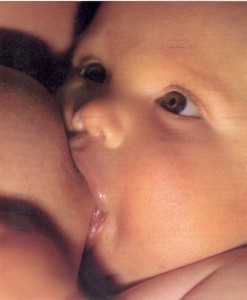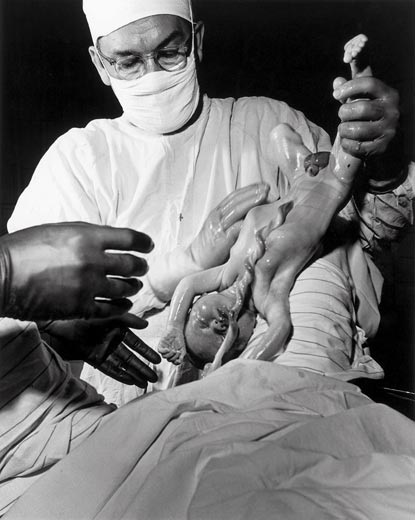By Jamie Habib | May 10, 2013
 Pertinent Point ~:~ Controlled cord traction used in high-resource settings does not affect the risk of severe postpartum hemorrhage.
Pertinent Point ~:~ Controlled cord traction used in high-resource settings does not affect the risk of severe postpartum hemorrhage.
In high-resource settings, the practice of controlled cord traction for the management of placenta expulsion is not associated with a decreased incidence of postpartum hemorrhage, according to the results of a study conducted in France.1
Because most cases of postpartum hemorrhage result from uterine atony—the failure of the uterus to contract after delivery of the baby and the placenta—measures to prevent this complication have been recommended for all women who give birth.
This active management during the third stage of labor typically involves the administration of an oxytoxic drug immediately after birth, early cord clamping and cutting, and controlled cord traction.
However, the effectiveness of each component has not been evaluated adequately, and the efficacy of early cord cutting and clamping and controlled cord traction remains controversial.
Although most guidelines recommend controlled cord traction for the prevention of postpartum hemorrhage, the implementation of this practice varies considerably from country to country and from obstetrician to obstetrician. In France, for example, controlled cord traction is considered poor practice because of the risk of uterine inversion.
To determine whether controlled cord traction affects the incidence of postpartum hemorrhage in a high-resource setting, 2175 women were randomly assigned to controlled cord traction and 2180 women were randomly assigned to standard placenta expulsion. Both groups of women were administered prophylactic oxytocin (Drug information on oxytocin) and underwent cord clamping and cutting within 2 minutes after delivery of the neonate.
 The rates of postpartum hemorrhage were similar between study groups; 9.8% of women in the controlled cord traction arm and 10.3% of women in the standard placenta expulsion arm experienced a postpartum bleed of at least 500 milliliters. The mean peripartum hemoglobin and hematocrit values also were similar between groups.
The rates of postpartum hemorrhage were similar between study groups; 9.8% of women in the controlled cord traction arm and 10.3% of women in the standard placenta expulsion arm experienced a postpartum bleed of at least 500 milliliters. The mean peripartum hemoglobin and hematocrit values also were similar between groups.
However, women in the controlled cord traction arm were significantly less likely than those in the standard placenta expulsion arm to require manual removal of the placenta (4.2% vs 6.1%, respectively; confidence interval, 95%). In addition, significantly more women in the controlled cord traction group than in the standard expulsion group had a shorter (15 minutes or less) third stage of labor (4.5% vs 14.3%, respectively) and reported less intense pain and discomfort (5.8% vs 7.4%, respectively). No cases of uterine inversion were reported.
According to the study authors, evidence supporting the practice of routine controlled cord traction is lacking. Among the 3 procedures used for active management of the third stage of labor, the use of oxytocin is the most widely implemented.
